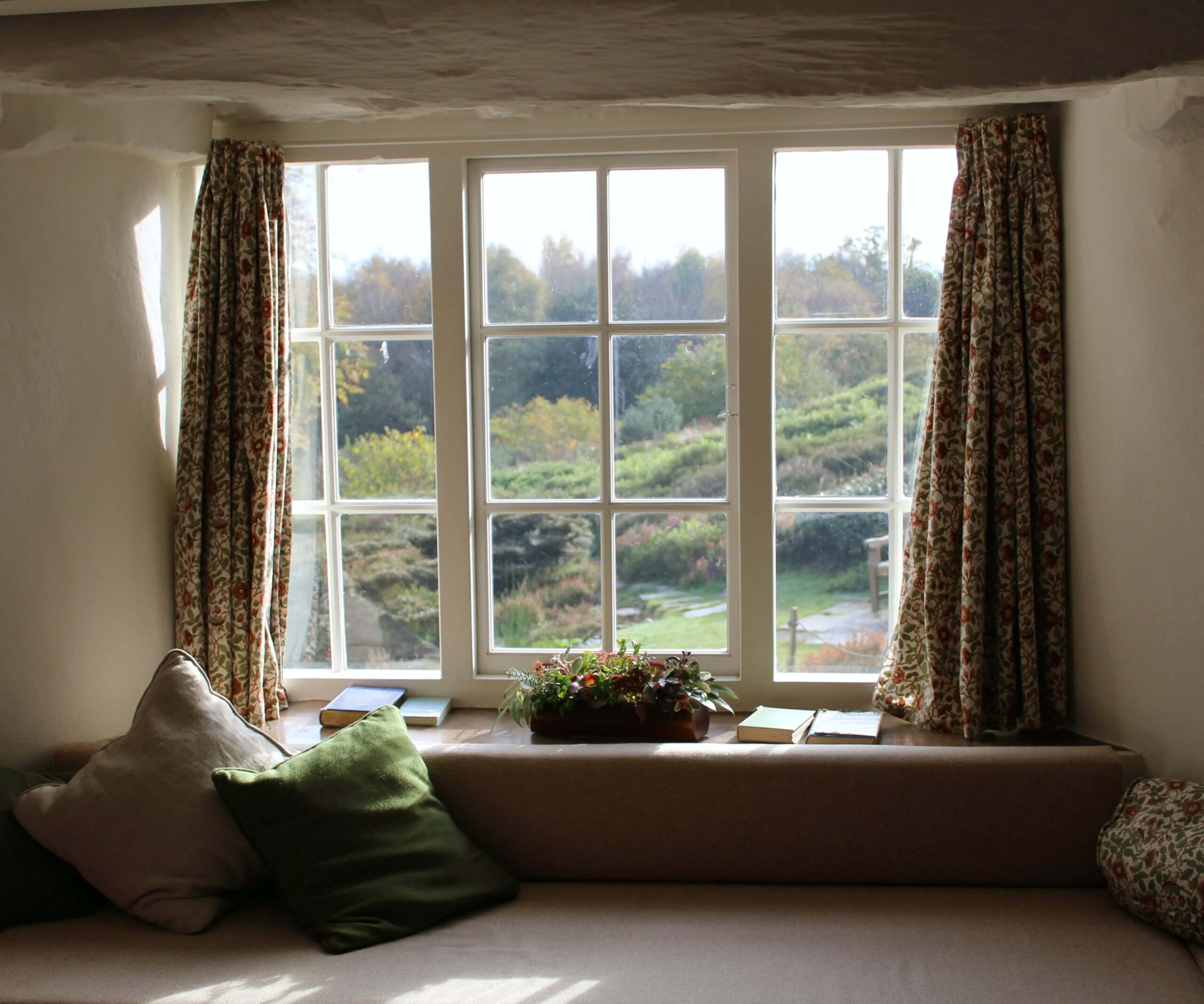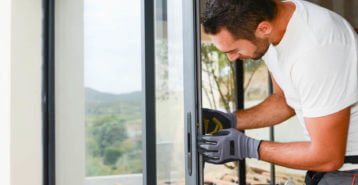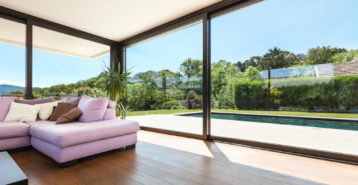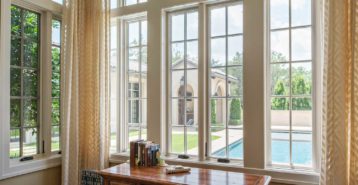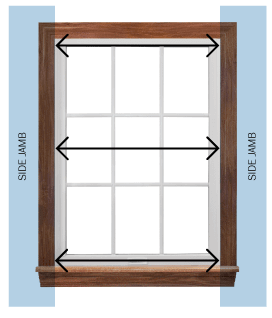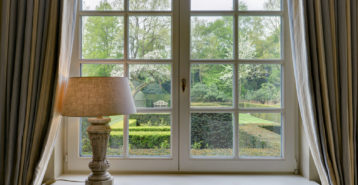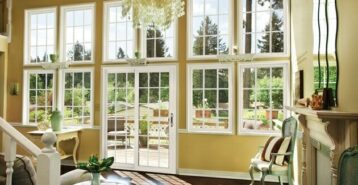Guide to Window Glass: Choosing the Best Glass for Your Home
Welcome to your complete guide to window glass: the one-stop resource for understanding every option available, from basic glazing to advanced energy-saving coatings. If you’re replacing your windows or upgrading existing glass, the decisions you make here will impact comfort, safety, and energy bills for years to come.
In this guide, we’ll walk through:
- How to choose between single, double, and triple glazing.
- Which air or gas fills are best for insulation.
- The difference between glass strength types like annealed, tempered, and laminated.
- When to invest in low-E coatings for energy efficiency.
- Privacy glass options for style and security.
- Typical window glass costs so you can plan your budget.
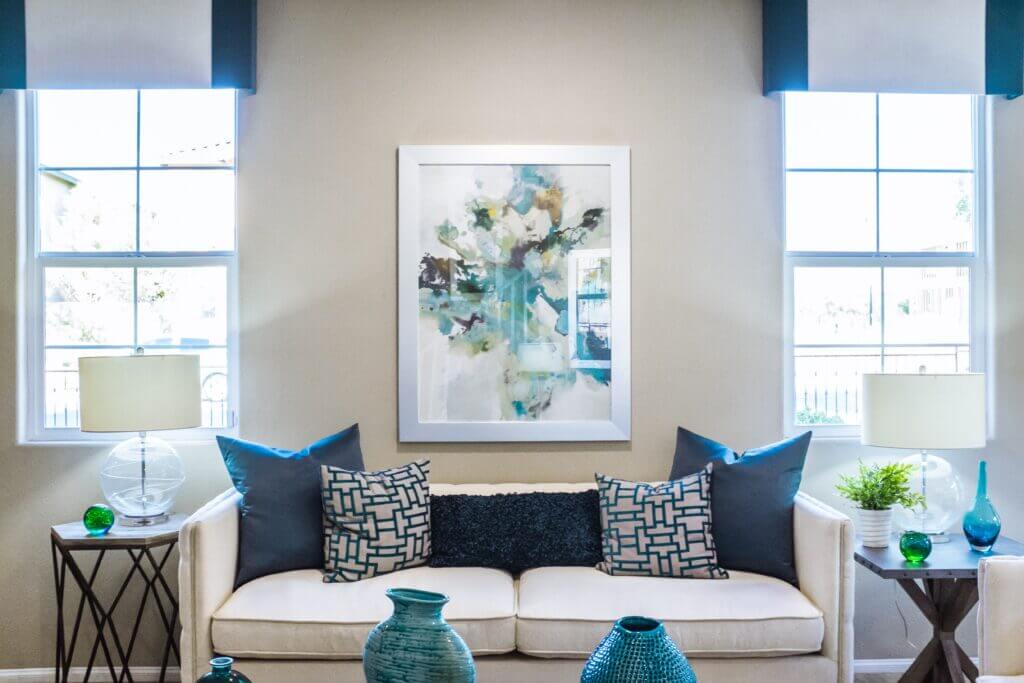
How Much Does Window Glass Cost?
Here’s a full guide to window glass costs. See below for a quick summary.
- Glass Replacement: Small-to-medium double-hung window with standard double-pane glass averages $280 to $325.
- New Windows: Glass typically makes up 40% to 60% of the total unit cost. Energy-efficient upgrades like triple glazing, low-E coatings, or laminated glass will increase the price.
| Glass Type | Average Cost per Window | Best for | Key Benefits |
|---|---|---|---|
| Annealed Glass | $300 to $500 | Basic residential windows in low-impact areas | Most affordable option; easy to replace |
| Heat-Strengthened Glass | $325 to $550 | Moderate-strength applications needing more durability than annealed glass | Twice as strong as annealed; better resistance to stress |
| Tempered (Safety) Glass | $350 to $750 | High-traffic or impact-prone areas | Shatters into safer, blunt pieces; 4 to 5 times stronger than annealed |
| Laminated (Security) Glass | $400 to $900 | Hurricane zones, noise reduction, UV blocking | Holds together when broken; excellent sound and UV control |
| Double-Glazed Windows | $613 to $1,307 | Most residential homes | Good insulation; cost-effective for most climates |
| Triple-Glazed Windows | $650 to $1,100 | Extreme climates | Superior insulation; reduces heat loss in winter |
| Low-E Coated Glass | $350 to $850 | Homes needing UV protection and energy efficiency | Reflects infrared heat; protects interior furnishings |
Steps to Choosing the Right Window Glass
Finding the perfect window glass for your home can feel overwhelming with so many options available. To make the process easier, we’ve broken it down into a clear, step-by-step approach. Let’s start with the most important decision factors, like the number of panes, before moving into specific features such as glass strength, energy efficiency, and privacy options.
Step 1: Window Glazing — Single, Double, or Triple Pane?
Glazing refers to the number of glass layers in your window. The more panes, the better the insulation.
- Single Pane: One layer of glass. Lowest cost but offers little insulation; best for sheds or garages.
- Double Pane: Two panes with a sealed gap of air or gas in between. This is today’s standard for most homes and balances performance with affordability.
- Triple Pane: Three panes with two insulating gaps. Offers maximum efficiency and noise reduction, ideal for extreme climates.
If you live in an area with harsh winters or very hot summers, triple-pane windows can pay off in comfort and energy savings.
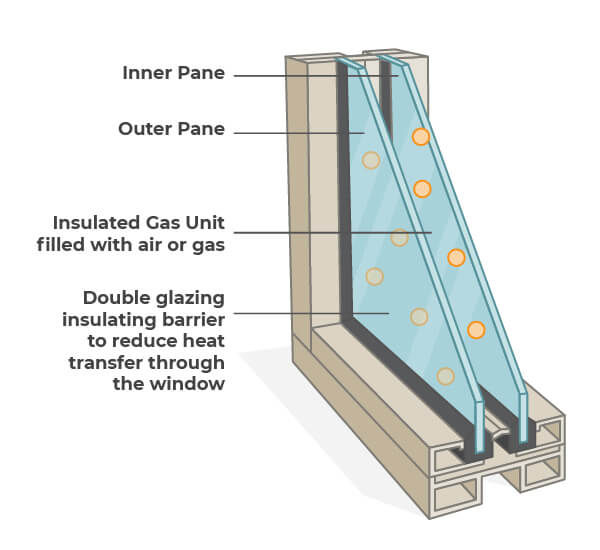 Step 2: Choosing Air or Gas Fills
Step 2: Choosing Air or Gas Fills
The space between panes can be filled with air or a heavy inert gas for better insulation.
- Air: Budget-friendly but less insulating than gas.
- Argon: The most common and affordable gas fill; provides solid insulation for most homes.
- Krypton: More insulating than argon; best in triple-pane windows with narrow gaps.
- Xenon: The top performer but rare and costly, typically found in high-end specialty windows.
To learn more, you can visit our guide to insulated glass.
Step 3: Glass Strength Options
Strength matters for safety, durability, and building code compliance.
- Annealed Glass: Standard glass, lowest cost, but shatters into sharp shards.
- Heat-Strengthened Glass: Twice as strong as annealed glass of the same thickness, but not safety-rated.
- Tempered Glass: Four to five times stronger than annealed; shatters into small, blunt pieces for safety.
- Laminated Glass: Multiple layers with a plastic interlayer for maximum security, soundproofing, and UV protection.
For a comprehensive overview of all your options, check out our guide to safety glass.
Step 4: Should You Choose Low-E Glass?
Low-E (low emissivity) glass has a thin coating that reflects heat and blocks UV rays.
Benefits:
- Keeps heat out in summer and in during winter.
- Protects furniture and flooring from fading.
- Improves overall energy efficiency.
This upgrade typically adds $50 to $150 to your window costs but can lower utility bills for years.
Step 5: Privacy and Specialty Glass
Privacy glass lets in light while obscuring the view from outside.
Options include:
- Frosted
- Textured or patterned
- Mirrored/reflective
- Tinted
Also consider modern alternatives like smart glass that can switch from clear to opaque.
Understanding Window Glass Ratings
When comparing products, look for glass ratings like the NFRC (National Fenestration Rating Council) label. Key ratings include:
| Factor | What does it mean? | Range listed | What is a good score? |
|---|---|---|---|
| U-Factor | It measures how well a product insulates a home, preventing heat from escaping | .2-1.20 | The lower the grade, the better the product is at keeping heat inside |
| Visible Transmittance | It measures the amount of light passing through a window and into a home | 0-1 | The higher the number, the more natural light will come into your home |
| Condensation Resistance | It measures to what extent a window will resist forming condensation on the inside | 1-100 | The higher the number, the more resistance the window has |
| Solar Heat Gain Coefficient (SHGC) | It measures how well a product resists undesired solar gain | 0-1 | The lower the grade, the less undesired heat gain in a house |
| Air Leakage | It measures how much air from outside will leak into a room | ≤ 0.3 | The lower the number, the less drafty |
Using This Guide to Window Glass to Plan Your Project
To make the best choice:
- Decide on glazing level (double vs. triple).
- Pick the gas fill.
- Choose the glass strength your location and safety codes require.
- Add a low-E coating for efficiency.
- Select privacy or specialty glass if needed.
Selecting the best window glass for your home is about balancing performance, cost, and your personal needs. By understanding glazing options, insulation choices, strength ratings, and specialty features like low-E coatings, you can tailor your windows for maximum comfort and efficiency. Keep in mind that costs will vary depending on size, materials, and upgrades, but investing in the right glass now can lead to lower utility bills, improved safety, and a more enjoyable living space for years to come. With this guide to window glass, you’ll have the knowledge to confidently compare options and choose the perfect fit for your home.
Compare top-rated windows pros in your area.
Read real homeowner reviews, explore qualifications, and view promotions. Modernize makes it easy to browse professionals and find one that will be perfect for your project.
